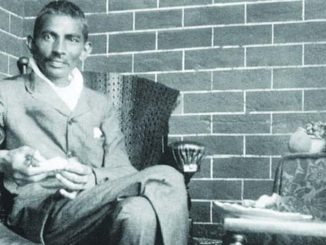

“The Kashmiri Pandit tragedy has continued for 30 years now, and like all compounded tragedies requires a range of actions, from security to justice to reconciliation. Beginning with security, which is the first requirement to enable justice and reconciliation to follow, it is a mistake to imagine that gated enclaves alone will provide it, or even that stepped-up counter-insurgency operations will minimize the risk. Each measure is useful if accompanied by community support, but neither is a solution to the security dilemma by itself.”
Over the past two weeks, more than 11 civilians and nine Army troops have been killed by militants in the Kashmir Valley. Most of the targeted civilians have been Hindus, though there have also been Muslims, and a Sikh. The Hindus killed include Kashmiri Pandits and migrant labor.
Wave of fear, insecurity : The immediate reaction to these killings has been a flight of Pandits who had returned to the Valley under the 2006 Prime Minister’s programme for the return and rehabilitation of migrants, which offered jobs in the Valley to Pandit teachers. Pandit organizations say that as many as a third of the returnees have left; even those of the 800 families that stayed through the insurgency years have begun to leave. Though Kashmiri political parties and civil society, as well as Lieutenant-Governor Manoj Sinha’s administration, have pleaded with them to stay, their pleas are unconvincing given the very real insecurity created by the killings.
The plight of migrant labor is equally grave. Most are attempting to leave the Valley and return to their home States. The administration has ordered that those who are not able to immediately return be sheltered in police stations and guarded camps. In other words, like refugees. Whether they will then be aided to return to their homes remains to be seen; likely they will.
These two groups are not alone in wishing to flee. A fresh wave of fear has gripped the Valley, with most residents fearing they may be caught between the militants and the administration. Allegedly, over 700 people have been taken into detention by the police, under suspicion of supporting militancy. Meantime, according to intelligence agencies, potential militant targets include religious leaders, punches and the media.
It was widely anticipated that Pakistani armed groups would be emboldened to revive cross-border infiltration following the Taliban’s takeover in Afghanistan. Now it seems that their strategy repeats elements of the insurgency of the 1990s. As happened then, the insurgency was prefigured by attacks on Pandits who were seen by Islamist militants as an arm of India because they were Hindus, and Muslims who worked in the State administration or central Indian agencies such as Door darshan.
Attacks and the aim : The attacks were intended to both communalize the Valley and paralyze its administration, and over time succeeded in doing so, albeit only partially. The Prime Minister Atal Bihari Vajpayee’s ceasefire negotiations with cross-border armed groups in 2000 were shattered by the killing of over 100 Bihari laborers, but the years of peace building that followed, from 2002-2014, restored a large degree of administration and created conditions for the return of Pandits — sadly at far too gradual a pace — and of migrant labor.
Whether cross-border and local militant groups succeed in once again communalizing the Valley is debatable. Much depends on the policy the Union administration adopts in response.
There are two quite separate issues involved: one, reassuring the minorities in Kashmir as well as the wider public of the Valley; two, a rethink on counter-insurgency strategy, including its cross-border tentacles.
Some reassurance : Hearteningly, every single opinion group in Kashmir has condemned the killings. Mosques have broadcast their criticism. Kashmiri political parties have voiced their opposition to such militancy, as have political leaders, including the Hurriyat and Mirwaiz Umar Farooq. Civil society groups have issued statements of protest. Local community leaders and neighbors have visited Pandit homes to offer aid and support. This wave at the ground level can provide a strong base for reassurance, if encouraged.
Encouragement can begin with the Lieutenant-Governor. Thus far, Mr. Sinha’s administration does not appear to have consulted either the Kashmiri Pandit organizations, or the various groups that have condemned the killings, on which steps can be taken to restore a degree of confidence. This is surprising, given that these groups, added together, comprise a formidable cross-section of public opinion, and with their support, militancy can once again be socially marginalized, as it was during the peace-building years. From available information, it appears that the bulk of the recent civilian killings have been carried out by what the Army calls ‘hybrid militants’, because they are locally recruited and trained, have regular jobs and are part-time militants using basic weapons such as country pistols. The implications are that the field of militancy has grown more dispersed, with wider public support, despite counter-insurgency successes in degrading large armed groups such as the Lashkar-e-Taiba and the Jaish-e-Mohamed. In this context, any opportunity to marginalize militancy is vital.
Setback for Kashmiri Pandits : Many have begun asking whether Kashmiri Pandits will ever be able to return to the Valley, as the Narendra Modi administration had promised in August 2019. There is no doubt that the recent civilian killings have been a major setback to prospects of return. It is also the case that Kashmiri Pandit organizations have increasingly complained of administrative neglect on returns over the past year. A recurring point that is made by some of them is that the administration, while focusing on returns, needs to simultaneously pay attention to securing Pandit families that never left. Their condition has worsened as their numbers have shrunk; though less covered by the media, the same problem has begun to affect the Sikh minority too, whose numbers have shrunk over the past decade-plus.
The Kashmiri Pandit tragedy has continued for 30 years now, and like all compounded tragedies requires a range of actions, from security to justice to reconciliation. Beginning with security, which is the first requirement to enable justice and reconciliation to follow, it is a mistake to imagine that gated enclaves alone will provide it, or even that stepped-up counter-insurgency operations will minimize the risk. Each measure is useful if accompanied by community support, but neither is a solution to the security dilemma by itself. True, targeted killings will only cease when insurgency does. But peace-making combined with counter-insurgency has proved more efficient in ending insurgency in democratic countries than counter-insurgency alone, in our own experience as well as across the world. Thus far, the Union administration has not held out any olive branches; on the contrary, its implementation of the August 2019 decisions has added one cause for resentment after another, the latest being the multiple use of Article 311(2) to dismiss government employees without an enquiry or hearing. A policy for Pandit property recovery that had not been thought through did not help either; apparently it has now been corrected. Political science and sociology both tell us that an insecure majority is unlikely to protect vulnerable minorities; it is focused on its own survival. The arrest of over 700 people in the aftermath of the recent civilian killings has added to the majority’s sense of insecurity, because it raises questions about why police intelligence has not narrowed the field of suspects as should, surely, be professionally required.
Approach to Pakistan : The Narendra Modi administration appears to have adopted a multi-pronged approach to Pakistan recently, beginning with a ceasefire and extending to an invitation to the Pakistani National Security Adviser for a regional meeting on Afghanistan, while giving the Army a free hand on cross-border infiltration. Why then is it not adopting a similarly multi-pronged approach in the Valley, where civil and human rights remain severely restricted and the administration lacks the transparency that oversight and grievance-redress commissions provided? Without overall civil and human rights, how can minority rights be protected or minority returns be encouraged?
(The author is a writer and policy analyst)





Be the first to comment